#i am also a proud chicana if that makes it any better
Explore tagged Tumblr posts
Text
Okay D.C. pictures part two! More National Gallery of Art pictures!
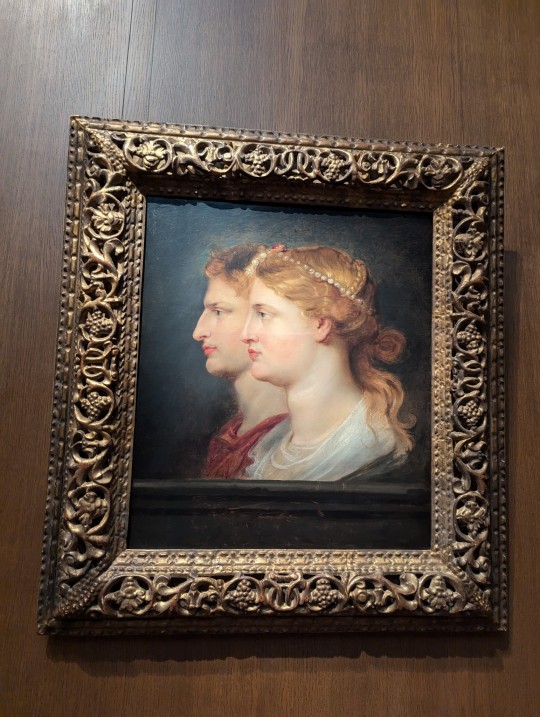
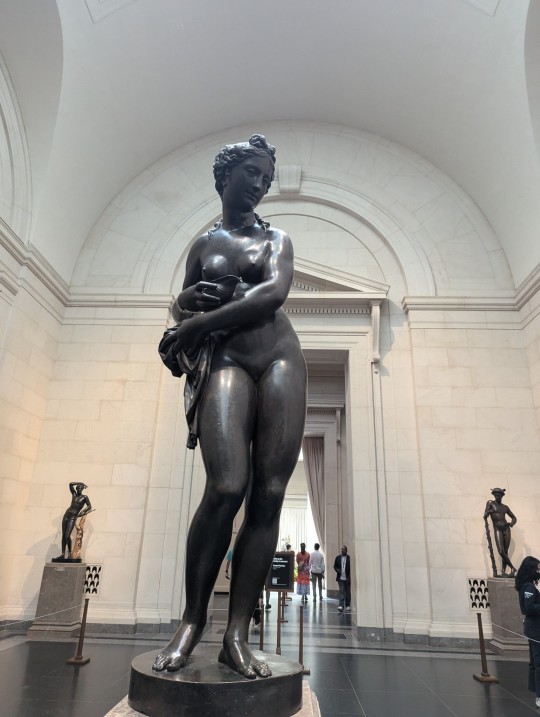
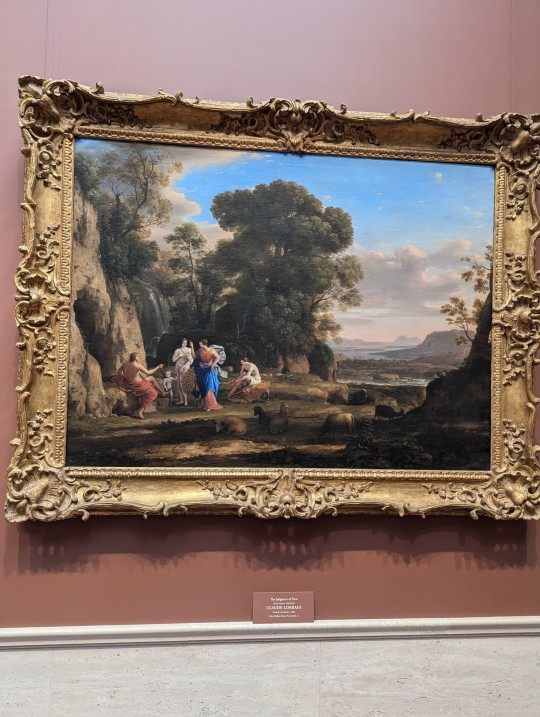

Agrippina and Germanicus-Peter Paul Rubens (1614); Venus-Francesco Brambilla the Younger (1580); The Judgement of Paris-Claude Lorraine (1645); The Emperor Hadrian-Lodovico Lombardo (1550)
There's actually two gallery buildings. One with older European art and the second with more contemporary art. I clearly did not make it to the second. I did check out the Hirshhorn Museum though, which also focuses on modern art. Very interesting pieces, I wish I had an eye for contemporary styles.
So those were all the museums. I also made it to the Lincoln Memorial. The inscription above Lincoln calls it a temple and it does feel like one. Not to be too much of a patriot on here, but this memorial really slaps.
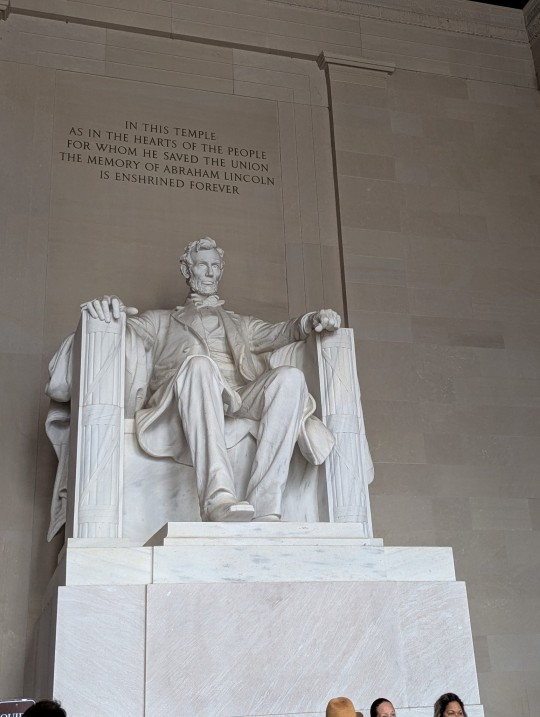
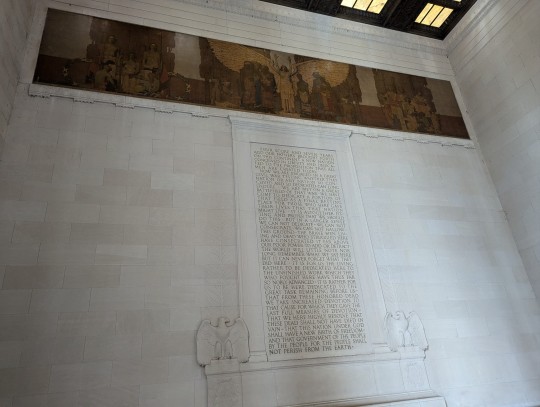
I visited the Capitol building very briefly. Beautiful ceiling. That's the Apotheosis of Washington by Constantino Brumidi (1865) up there.

And the most exciting visit, which I really lucked out on and did not expect to do:


I got to tour the White House! Please appreciate my beautifully redacted photos. Those are supposed to be braids on my head btw.
I know being American is a rightfully controversial thing. But being out there and getting to see all this, I felt proud. I think all the work I've done is perhaps paying off just a bit.
But also there's still work to be done. I can't lose my way or forget where I come from or who I do this all for.
#sorry for being a proud american on the blog again#i am also a proud chicana if that makes it any better#personal lore and musings
9 notes
·
View notes
Photo

☰ Subscribe StyleGroomingBest StuffCultureFitnessTravel & EatsPoliticsVideo Subscribe GO Colin Kaepernick Will Not Be Silenced men of the year Colin Kaepernick Will Not Be Silenced  BY THE EDITORS OF GQ PHOTOGRAPHS BY MARTIN SCHOELLER 4 hours ago He's been vilified by millions and locked out of the NFL—all because he took a knee to protest police brutality. But Colin Kaepernick's determined stand puts him in rare company in sports history: Muhammad Ali, Jackie Robinson—athletes who risked everything to make a difference. In 2013, Colin Kaepernick was on the cover of this magazine because he was one of the best football players in the world. In 2017, Colin Kaepernick is on GQ's cover once again—but this time it is because he isn't playing football. And it's not because he's hurt, or because he's broken any rules, or because he's not good enough. Approximately 90 men are currently employed as quarterbacks in the NFL, as either starters or reserves, and Colin Kaepernick is better—indisputably, undeniably, flat-out better—than at least 70 of them. He is still, to this day, one of the most gifted quarterbacks on earth. And yet he has been locked out of the game he loves—blackballed—because of one simple gesture: He knelt during the playing of our national anthem. And he did it for a clear reason, one that has been lost in the yearlong storm that followed. He did it to protest systemic oppression and, more specifically, as he said repeatedly at the time, police brutality toward black people. When we began discussing this GQcover with Colin earlier this fall, he told us the reason he wanted to participate is that he wants to reclaim the narrative of his protest, which has been hijacked by a president eager to make this moment about himself. But Colin also made it clear to us that he intended to remain silent. As his public identity has begun to shift from football star to embattled activist, he has grown wise to the power of his silence. It has helped his story go around the world. It has even provoked the ire and ill temper of Donald Trump. Why talk now, when your detractors will only twist your words and use them against you? Why speak now, when silence has done so much? At the same time, Colin is all too aware that silence creates a vacuum, and that if it doesn't get filled somehow, someone else will fill it for him. In our many conversations with Colin about this project, we discussed the history of athletes and civil rights, and the indelible moments it called to mind, and we decided that we'd use photography—the power of imagery and iconography—to do the talking.  By the end of the 1960s, Muhammad Ali's stand against the Vietnam War—he'd marched in Harlem with the Nation of Islam after he was drafted and refused to serve—resulted in him being locked out of his sport for three years, at the peak of his talent, much as Colin is now. He continued to train throughout that period, waiting for his chance to return to boxing. He was known for jogging in the streets, and kids would chase him—the People's Champ, boosted in his darkest days by the joy of his truest fans. That's why we decided to photograph Colin in public, in Harlem, among the men, women, and children he is fighting for. To connect him to a crusade that stretches back decades. And because Colin has spent a year as a man without a team, we worked with him to assemble a new one: ten of his closest confidants—artists, activists, academics, and one legend of the civil rights movement—who shared with GQ what Colin's protest means to them, and what we all should do next.  Ava DuVernay Filmmaker, Selma, 13th, and 2018's A Wrinkle in Time I see what he's done as art. I believe that art is seeing the world that doesn't exist. A lot of people excel at creativity—making TV, movies, painting, writing books—but you can be an artist in your own life. Civil rights activists are artists. Athletes are artists. People who imagine something that is not there. I think some folks see his protests, his resistance, as not his work. Not intentional. Not strategic. Not as progressive action. As if this was just a moment that he got caught up in. This was work. This is work that he's doing. The last time I saw him was the night after Trump called him out at the Alabama rally. It was a really dynamic weekend. I had dinner with him and Nessa [Kaepernick's partner]. To be able to sit with that brother on this particular day—on the day between two historic cultural moments that swirled around him—was shape-shifting for me. Being able to observe that and witness his stillness and wisdom—I'm just really honored to know him. He's sitting there and I'm sitting there and I'm like, "Look at this brother—he's doing better than any of us would've done." A lot better. With a lot more elegance. Carmen Perez Activist, executive director of The Gathering for Justice, which addresses mass incarceration and child incarceration What I always tell people is, I could teach you about the law, I could teach you about the criminal-justice system—but I can't teach you how to have heart. We don't need a movement full of experts. We need people who care deeply to stand up and offer what they have, because there's a role for everyone. You make music? Make some for the movement. You cook? Organizers need to be fed. You teach self-defense or yoga? Help people heal. You're an athlete? Use your platform to raise awareness. It's not about everyone trying to become the next Martin Luther King Jr., because he had clergymen and journalists and artists like Harry Belafonte. It's about how we connect to our neighbor and offer our skill set. As Mr. Belafonte has said: Don't pay me back—pay it back to the cause. I want people to understand that even if incarceration doesn't personally impact you, or police brutality doesn't personally impact you, you can still be involved. How can we show these mothers who are suffering that we love them and we care about them? I often ask: Can we see our liberation bound to one another's? I'm a proud Mexican-American and Chicana who deeply believes that black lives matter and that once black people are free, then my people will be free.  Colin Kaepernick walks tall on the streets of Harlem. Jacket by Harlem Haberdashery / Turtleneck and tuxedo pants by Waraire Boswell / Watch by Cartier / Necklaces, his own  J. Cole Rapper Colin and I met years ago. I am—I was—a big 49ers fan. I met him during his breakout season. I actually went to the first game he really played in, against the Jets. I just happened to be at that game. It hit another level for me the second I learned he was taking a knee. And it wasn't just that—it was when I saw the shit he was saying in the interviews when they pressed him about it. His answers were just so clear and potent. Like, right on point. And he wasn't backing down. And he wasn't afraid. He was just being honest. And it didn't seem like he was looking for attention. It caught me off guard because, you know, nothing personally against him, I just didn't know when I met him that the person with the biggest balls in sports would be him. You're talking about a guy in his athletic prime, who's lived his whole life dreaming about playing football at a level that millions of kids dream to get to. And in his first big season, he takes his team to within five yards of winning a Super Bowl. But then, at some point in time, he becomes conscious about what's happening in the world. And suddenly something that he's been doing blindly for his whole life—standing for the national anthem—now feels uncomfortable. Why? Because now it feels phony! It feels like, Man, how can I stand for this thing when this country is not holding itself true to the principles it says it stands for? I feel like we're lying. And look what happens to him. Had he not done that, this guy would be making millions of dollars right now. Period, point blank. And more important than the money, he was living his dream. He sacrificed his dream.
#colin kaepernick#solid#gq magazine#gqstyle#gq#citizen of the year#sacrifices#j cole#quotes#meeting#legend#silence#protest#modern day#black panther#martin luther king jr#believe#do right#focus#snozzberrykush#i kneel with kaepernick#love
1 note
·
View note
Text
Zine Rough Draft
Section: HSS 1106A
Friday 10am- 10:50am
March 2, 2017
My goal for this notebook is to convey the reasons why I have chosen to make myself the focus of this assignment. I am an “object” that has traveled domestically and internationally. I have observed and experienced situations that have left me questioning my place in society. Through the years, I have become a product of what I believe is expected of me and not what I expect for myself. I have lost touch with my heritage and roots for the fear of not fitting in. I hope to get a better understanding of what it means to be a citizen of the United States and a daughter of two immigrant parents.
My name is Yasmin Rojas Gayosso and I was born in the United States, not by choice, but for necessity. I am the daughter of two Mexican parents. I am an American citizen and I am entitled to the rights in the constitution. My parents are immigrants and are not entitled to any. We are both Mexican, however, because I was born in the United states, I have the “luxury” to call myself an American. As the “object” of this assignment, the theme that I can best relate to is (im)migration and citizenship. The reason I can relate to these themes is because my title as an American Citizen has had little effect on my daily life. I am constantly living the life of an immigrant. I live in fear every day. The fear that one day my family will be taken away from me. The fear that my rights will be abused because of what I look like. My title as an American citizen can only do so much in a country that sees me differently.
When I was about thirteen years old I went to Mexico City to visit my family. I was too young to understand how much of an outsider I was to the country my parents grew up in. As I reflect, I remember being told to not speak. If I spoke, I would give myself away. I would become a target to those who envied my connection to the United States. If I spoke, I would put myself in a vulnerable situation. My aunt would say, “you could get kidnapped because people will assume you have money since you come from the United States.” Everything seemed so strange. It was evident, I was just a foreigner. I was a foreigner who did not feel safe in what could have been my country of origin.
My visit to the east coast proved to be a wake-up call. I observed that children, teenagers, and adults of different ethnicities embraced their heritage. Although I may be generalizing, there was a sense of unity and pride. It was beautiful to observe how connected people were to their roots and as a result, I asked myself at what point I lost touch with mine? Could it have been the faint memory of my neighbor screaming, “go back to your country you illegal immigrants” that continues to hunt me. Could it have been my visit to Mexico that made me feel out of place. Whatever the reason could have been, I am determined to change my mindset and become the person I know I can be, a proud Mexican. A Mexican who respects the language, music, dance, food, and much more. A Mexican who understands the value of hard work, family, and loyalty. Most importantly, I want to be a Mexican American woman that passes is determined to pass down her heritage to future generations.
In California, I unfortunately feel like an outsider. Although it is a liberal state, and one assumes it is welcoming, I struggle to feel included. Having a president-elect that views me, the “object” as a “criminal” and “rapist” does not make anything easier. However, due to Trumps allegations, I have seen the hurt and fear he has brought to my community. This “object” will no longer remain silent. I will stand up for myself, my family, and my friends. I will be “the one” to make a change. I will educate myself and others about the chaos silence can bring to people.
Chapter one:
Quote: “I go to seek a Great Perhaps. That’s why I’m here. So I don’t have to wait until I die to start seeking a Great Perhaps” -John Green, Looking for Alaska
I believe that I do have a purpose in life. I am not sure what It is but I know I am destined to do great things. What I am trying to figure out however, is why I am here. How can my existence be a benefit to the present and future? I want to seek this “Great Perhaps” but before I can do that, I must first understand the national binds that act with or against me.
The fourteenth amendment states that “all persons born or naturalized in the United States and subject to jurisdiction thereof, are citizens of the United States.” This law is what binds me to the United States. It protects my constitutional rights. It is the document that gives me the right to challenge the law. As a citizen of the United States, I am automatically put on a different playing field. The field that many may find threatening and others beneficial. Through the lens of those who are against my citizenship, I am not “American.” I do not fit the “American” profile. So, the question that comes to mind is, what does an American look like? Is the color of my skin, the sound of my voice, and the way I walk unamerican? America is a nation that is composed of people with different ethnicities. We are all Americans because it is in our history. So why is it that I am not the ideal “American?” Can the ideology of “Whiteness” be a national bind that has been engraved in the country? If so, to become “American,” must one fulfill the requirements of “Whiteness.” These are questions that I constantly ponder about as I seek my great perhaps.
Hypothetically speaking, what if I mastered this so-called idea of “Whiteness.” Will I then be socially accepted. In my opinion, I would not be. The reason I jump into this conclusion is because having citizenship and practicing the idea of “Whiteness” does not change my genetic makeup. What I see, is what others see. I am not just an American citizen, but I am also a Chicana. I am a woman who lives in an Anglo- Saxon society that practices patriarchal ideologies. I am a Chicana who is negatively racialized and ignored. One may wonder then, “How will you ever reach that great perhaps, if many factors are working against you?” My answer to that is, “I have no idea, but I am excited to find out.” I am excited and prepared to find out what odds I’ll be able to defy regardless of the obstacles ahead of me. The journey will be the best part because I will be able share stories of my experiences to those who fear to seek the great perhaps. Thank you.
Chapter 2
Relation:
The way in which two or more concepts, objects, or people are connected; a thing's effect on or relevance to another.
In 1942, the Bracero Program was enacted and served as a safety net for agricultural famers who feared labor shortage due to World War Two. Under executive order, this program allowed Mexicans to come to the United states on a temporary farming contract. To many Mexicans, the program was more than just a contract. It was an open door to seek the opportunities many spoke about. What was not informed however, was that Mexicans were being exploited for cheap labor. As a result, Mexicans were unable to reach the “American” dream. The bracero contracts were constantly violated and braceros were discriminated against. Due to the capitalist structure, Growers continued to support the bracero program despite the complaints. Unfortunately, as more Mexicans come to America, the more they were discriminated for being immigrants. Mexicans were not recognized for their contribution to the American economy during World War Two. Instead, Mexicans were negatively racialized to impede them from moving up the social ladder.
The reason I have provided a brief history of the Braceo Program is because I want to understand how my connection to my parents connects me to American History. My grandfather was offered a job through the bracero program, however he declined. My grandfather is Mexican. Regardless if my grandpa did the bracero program or not, he is still connected. Connected in the sense that he was living in the present of that moment in history. He, although not a bracero himself, is prone to receive the same discrimination that a Bracero would receive simply because he is Mexican. So how does this all connect to me, right? Well my mother carries my grandpa’s blood. She is Mexican and she is married to my father, who is Mexican as well. I am their daughter; therefore, the history is passed down to me.
Because I was born to two Mexican parents, I have acquired the stereotypes that originated in 1942 to today. Although the stereotypes are not facts, they are representations that have been carried along since the birth of my mother, my birth, and probably my future children. It is an on-going cycle. People say that history repeats, but I disagree. History does not repeat because it never stopped. The discrimination and racism has always been present. The social structure has been built to fed onto this on-going cycle.
One may question what my connection to my family and my connection to this on-going cycle has to do with me. Every part of me has to do with everything in relation to black thought. I am able to see past the blurred lines. I am aware that as a minority and person of color, my fate has been predestined in the social structure. Due to the stereotypes associated with my race, it is already assumed that “I steal jobs” and that I am “lazy”, therefore, I am not worthy of a well-paying job. The accent I hold when I speak and the way I dress makes people treat me differently. I am seen differently and therefore, I am given the “opportunities” that people believe I need. The idea of black thought may be misconceived. Black thought does not only constitute “being Black,” it can be applied and understood by people of color who suffer from the effects of their racialized past. To understand black thought, one must learn to accept that the structure has been created to work against the, “non-whites.” As a Mexican-American woman, I have learned that black thought cannot be unlearned. Black thought can be used to challenge the social structure. It is a form of thinking that few understand; but to those who understand it, I am with you.
Overall, I would like to answer a question Professor Wayne Yang asked in class in regards to relation, “Who are you working for?” My response to that is, I am working for the young, the dead, and living. I aspire to create change in a world that has been programmed to act and think a certain way. I want to protect the innocence of the children. I want to help children make their own judgements based on their own experiences, not on the experiences and biased thinking of others. I also hope to represent the dead. I want to be their voice whenever they are not being represented. I want to defend their past, their struggles, and everything they worked hard to accomplish. Most importantly, I want to invest my energy on working for the living. I want to march along with people of different races, gender, disabilities/ abilities, religion, and sexuality. I want to be the hand that welcomes them and says, “I am with you and together we will fight for justice.”
I am dedicating this page to answer several questions that my TA, Cynthia Vasquez was curious to ask me.
1. Question: Can a Chicana be white?
Answer: A Chicana may identify herself as white on paper; however, in society it may be unacceptable to physically identify as white. It is sometimes evident that when a Chicana embraces the American culture, she is presumed to be “white washed” and is looked at negatively. Therefore, if a Chicana publicly identifies herself as white, then she could potentially be looked down upon in both of her cultures.
2. Question: What does Chicana mean
Answer: From my understanding, the term Chicana derives the term Mexican- American; therefore, a Chicana is a native U.S citizen born from Mexican parents. Chicana may also mean “regeneration.” For example, if her parents are not native born citizens of America, then their children who are born in the United States will have the opportunity to demonstrate what their parents have taught them. Then, they will be able to prove what they are capable of achieving.
3. Question: What does a Chicana even look like?
Answer: In my opinion, there is no “face” that can describe what a Chicana looks like. Everyone is physically different. What I can say however, is that a Chicana is a woman who may or may not identify with the culture and language of her parents. The reason I say “may” is because I have come across Chicana women who regardless of their practices or language, still acknowledges their connection to their parent’s roots.
4. Question: How are your racialized in Mexico and in California?
Answer: In Mexico I am racialized as a privileged American. I am not Mexican, but a tourist. I do not speak proper Spanish because of my American Accent. Sometimes, I am adored. I become a form of entertainment because I am bilingual. The young children ask me to translate words and they laugh at how funny they sound. In California I am racialized as “uncivilized”, “uneducated”, and much more. Regardless of my citizenship, I feel as if I am not taken seriously and I must prove my worth.
OSm+�4p�#
0 notes